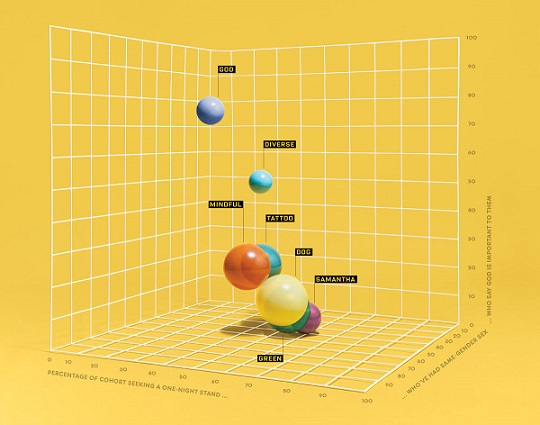With Valentine’s Day just around the corner, many singles are reflecting on their relationship status and turning to the world of online dating. Take the case of UCLA mathematics doctoral student Chris McKinlay who had been using the popular OKCupid site with little success. OKCupid was founded by Harvard math majors in 2004, so it seemed like a good match for McKinlay to find a mate. But after months of trying to get matches, his compatibility with the 80,000 women in Los Angeles using OKCupid was abysmal.
It is not surprising McKinlay didn’t get many matches. Los Angeles women are very far from having any interest in a mathematician. Of course it could have been that McKinlay gave up his apartment, preferring to sleep on his desk in the UCLA Math Science building, showered in the Men’s gym on campus, and drove a broken down Nissan. I went to UCLA as a math major and am familiar with the Math Science building; not a good place to bring your date back to.
So what’s a mathematician do when faced with adversity? Turn to math of course. McKinlay turned to a branch of machine learning called “unsupervised learning” and built a detailed clustering model to seek out groups of potential partners based on the survey questions the women chose and how they answered them. The problem was getting the data, so he wrote some Python code and implemented “bots” to harvest 6 million questions and answers from 20,000 women all over the country. This enabled him to build a model that yielded the clusters shown below:
After a process of elimination (since clustering is a subjective process), he narrowed his sweet-spot down to two clusters of women. One was a cluster dominated by women in their mid-twenties who looked like indie types, musicians and artists. The other was slightly older women who held professional creative jobs, like editors and designers. He went after both. After spending a whole summer on this project, he’d been on more than 55 dates, and still no permanent match. Lo and behold, then came the message from Christine Tien Wang, a 28-year-old artist and prison abolition activist. They’ve been dating for one year now, although she’s living in Qatar now on a one-year art fellowship. The couple relies on Skype to keep in touch.
So come Feb. 14 and you find yourself seeking love and companionship, just fire up RStudio, do some web page scraping to siphon off some online dating data, and see what kind of lovely clusters you can come up with!
A complete account of McKinlay’s adventure in online dating appears in WIRED.
Sign up for the free insideBIGDATA newsletter.





Speak Your Mind